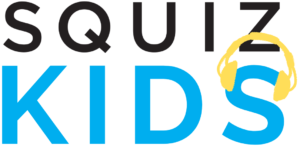
The History of Vaccines
Comprehension Activities
EPISODE TRANSCRIPT
They can be sniffed, swallowed, or jabbed in your arm…. the earliest attempts involved scabs … and they’ve saved millions of kids from sickness and death. This is your Squiz Kids Shortcut to the history of vaccines—the podcast where we dive into the who, what, when, where, why and how of the big news stories. I’m Amanda Bower.
And I’m Bryce Corbett.
For the last two years on Squiz Kids, we’ve heard a LOT about vaccines for Covid 19 – how they were developed in record time, how the government waited for high levels of vaccination before reopening the country, and why it took longer for kids to be given jabs. But there’s more than a thousand years of history behind vaccines, for all kinds of diseases.
Today, we’ll take you through HOW vaccines work, WHEN the first vaccines were developed, and WHAT diseases vaccines have prevented and eradicated – which means gotten rid of – through history.
Listen carefully – there’s a Squiz at the end!
HOW
Okay, Bryce, so you know how when you get sick with a cold or something, we talk about your body “fighting” the sickness?
Sure do, although I’m guessing that there’s not an actual boxing match between the disease and my body…
No.. although it’s fun to try to picture that. What happens is when a disease invades your body, your immune system, which is made up of different organs in your body, starts to make special proteins called antibodies. The job of the antibodies is seek and destroy the disease. They find the disease molecules, stick themselves onto the disease, and then bring in other parts of the immune system to punch holes into the cells of the enemy, and kill it. Come to think of it… it does sound a bit like a boxing match!
So if our body can fight diseases on its own, why do we need things like vaccines?
Well, it takes some time for your body to form antibodies and fight the disease, and so you still get sick in the meantime.
And I’m guessing if it’s a really nasty disease, you might not be able to make the antibodies quickly enough to win the fight.
Exactly. Some diseases are deadly. So that’s where vaccines come in, to give you an early start to that fight. When you get a vaccine, either as an injection, or something you swallow, or something that gets puffed up your nose, it contains a dead or weakened version of a disease. That means it won’t make you sick… but your body will recognise that it needs to be fought, and your immune system will start making those antibodies.
So your body is learning how to fight the disease, without really having it?
Exactly. We get vaccinated, we make the antibodies, and then they stay in our body and our body remembers how to use them. So if the real disease does come along, they’ll go right into action, delivering a quick knock-out punch and stopping you from getting super sick.
How long does our body remember for?
Well, that depends on the disease. There are vaccines for more than 25 different diseases. For some, you only need one jab and your body will remember forever how to fight the disease. Others, you need a few at the beginning, and then never again, or not for decades. And then with our friend Coronavirus, it seems like regular boosters are the way to go. Boosters are what doctors call those extra vaccine reminders for our immune system.
It sounds like a lot of tricky science is involved … how long ago were the first vaccines developed?
WHEN
Would you believe, Bryce, that the first documented cases of people trying to inoculate themselves – inoculate means putting a disease into your body to train it to fight that disease – are from more than 1,000 years ago, in China?
What? What disease were they trying to fight back then?
It was an especially awful disease called smallpox, which – thanks to vaccines – no longer exists. It used to cause nasty sores to develop on the body, and a terrible fever. Before there were vaccines, eight out of every ten kids who got it, died. Remember, Squiz Kids: it’s been eradicted from the face of the earth, so you don’t need to be scared! But 1000 years ago in China, people were really worried. To try to develop resistance to smallpox, people would scratch the scabs off the sores of infected people … ew… and then either get kids to sniff the scabby stuff up into their nose, or scratch their arms until they bled, and then rub the scabs into the sore.
You are making a needle sound absolutely delightful.
Thank goodness medical knowledge and technology have improved over the past thousand years! Those early efforts weren’t really vaccination, because you were being given the full-on disease itself… the first true vaccine developed came along in 1796, and it was against our old enemy smallpox.
So what were they giving people, if it wasn’t those delicious smallpox scabs?
Cowpox! Cowpox was a disease similar to smallpox, but much much milder. What people noticed was that anyone who’d had cowpox didn’t get smallpox, even in a big outbreak. So the inventor of the vaccine injected some test subjects with a vaccine made from cowpox, and then a while later, he exposed them to smallpox… and they didn’t get sick! The first vaccine was born. And do you want to hear a fun fact?
Of course!
The word vaccine actually comes from the word for cow in Latin, “vacca.” Vacca… vaccine… The name stuck when other vaccines came along, even though no cows were involved.
Nice one! So WHAT other diseases are people trying to eradicate using vaccines?
WHAT
Well, in the first half of the 1900s, the most worrying disease affecting children was something called poliomyelitis, polio for short. It was a virus that weakened the muscles of many people who got it… sometimes so badly that the muscles in their chest were no longer strong enough for them to be able to breathe on their own. During the 1940s and 1950s, hospitals were filled with rows of iron lung machines to treat those patients.
Iron lungs? What were they?
Basically, it was a huge box that the patient lay in, with their head sticking out. The air pressure inside the machine would change, causing the patient’s lungs to expand and then contract without their muscles having to work. That drew air in and out for them, and kept them alive. Kids would have to spend at least two weeks lying in them, but sometimes they were in there for months.
And I thought lockdown was bad… imagine being stuck lying in a box for months!
It was pretty awful, and even if you recovered from polio, many kids would be left with muscle weaknesses for the rest of their lives. So a vaccine was something that many, many families all over the world were hoping for. That came along in the 1950s, and today, there are only a handful of cases of polio each year, in just two countries – Afghanistan and Pakistan. We’re almost at eradication.
And then there are all those vaccines that most kids get when they’re little – measles, mumps, rubella, tetanus. Today, vaccines prevent us from getting all sorts of nasty diseases. Now – some people are worried about side effects from vaccines – do you HAVE to get them to be able to go to school?
You don’t, but the school does need to know whether you’re vaccinated or not. They say that’s because if there’s an outbreak of a disease, then they need to be able to keep unvaccinated kids out of school, to keep them safe. But about 94% of all Australian kids have had all of those usual childhood vaccines – we’re not talking about COVID here, but about the standard stuff you get for more than 10 different diseases, starting when you’re a baby. Doctors say – and those 94 % of parents believe, I suppose – that the tiny possibility of a side effect from a vaccine is much, much lower than the risk of serious sickness and death from the disease itself.
So if we didn’t have vaccines, what would happen?
Well, the World Health Organisation estimates that about 3 million deaths are prevented EVERY YEAR through the use of just four vaccines: diphtheria, tetanus, whooping cough, and measles.
The S’Quiz
This is the part of the podcast where you get to test how well you’ve been listening…
1. What was the name of the machine that many kids with polio had to lie in for weeks?”
2. What did some kids in China 1,000 years ago sniff up their noses to try to avoid smallpox?
3. What farmyard animal gave vaccines their name?
